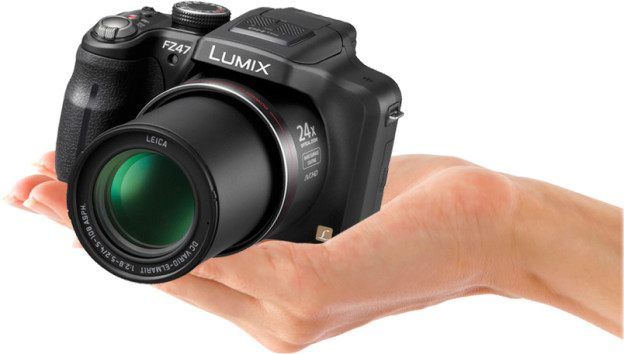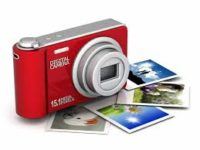
Bridge Camera: Good Alternative to DSLRs With a Huge Zoom
Bridge cameras are sometimes called DSLR-shape or DSLR-like, because they resemble DSLRs. These cameras provide similar features but, like compacts, they use a small sensor and a fixed lens. Most of these cameras use live preview to frame the image. Big physical size and a small sensor allow for a long zoom and wide aperture.
Their usual auto-focus is by the same contrast-detect mechanism as those used in compacts. However, many bridge cameras have a manual focus mode, while some have a separate focus ring for greater control.
Bridge cameras typically include an image stabilization system to enable longer handheld exposures, sometimes better than a DSLR for low light condition.
Bridge cameras are generally fitted with fixed lenses. Some have a lens thread to attach an accessory wide-angle or telephoto converter. Almost all bridge cameras can take photos at 24mm, 22mm or even 20mm, in 35mm equivalent terms. A lens thread is not often used, except for when using a UV or Circular Polarizing filter and lens-hood.
The scene is composed by viewing the display or the electronic viewfinder. Most bridge cameras have a slightly longer shutter lag than a DSLR. Many can store images in a raw image format, processed and JPEG compressed, or both. The majority have a built-in flash, but only a few have hotshot.
In bright sun, the quality difference between a good compact camera and a digital SLR is minimal. Bridge cameras are more portable, cost less, and have similar zoom ability. Thus, a bridge camera may better suit outdoor daytime activities, except when seeking professional-quality photos.
A 3D photo mode can be used in bridge cameras. In this mode the camera automatically takes a second image from a slightly different perspective, and provides a standard MPO file for stereo display.Note that another type of camera is called mirror less interchangeable-lens camera (MILC), which uses various sensors and offers lens interchangeability. These are simpler and more compact than DSLRs due to not having a lens reflex system. MILC camera models are available with various sensor sizes, including a 1/2.3 inch sensor (as is commonly used in bridge cameras such as the original Pentax Q), a 1 inch sensor, a Micro Four Thirds sensor, an APS-C sensor such as the Sony NEX series, Pentax K-01, and Canon EOS M. Some such as the Sony Alpha 7, use a full frame (35 mm) sensor. MILC cameras appeal to both amateurs and professionals.
See also:
- iGotOffer Encyclopedia: all information about Apple products, electronic devices, operating systems and apps.






Facebook
Twitter
RSS